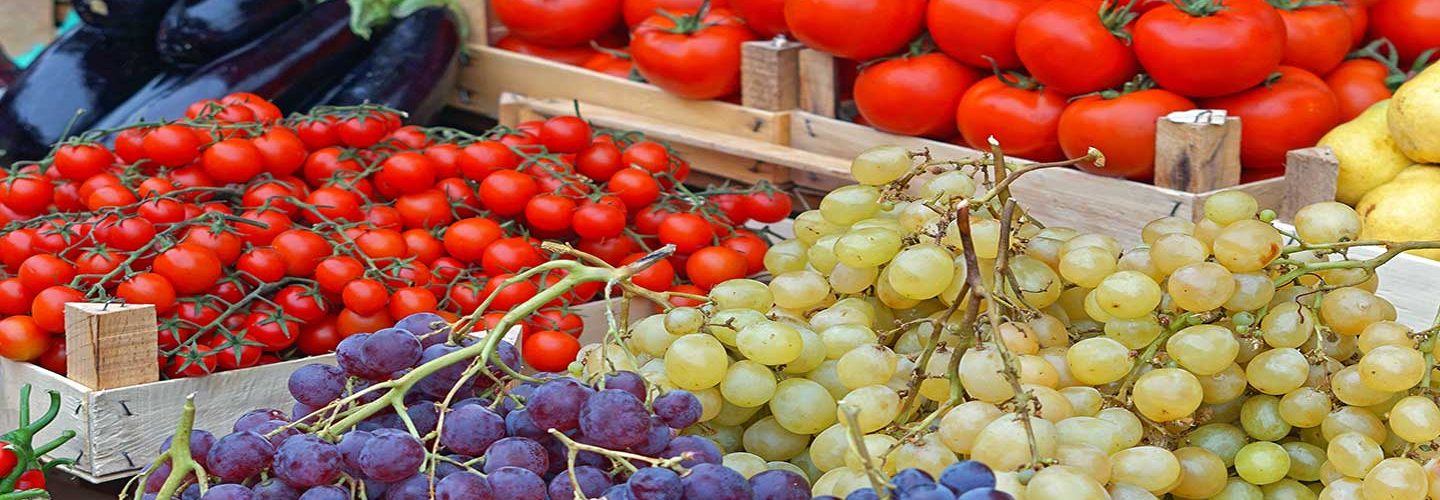Vera Pavlakovich-Kochi, Ph.D.
Vegetables and especially tomatoes recorded significantly higher increases than other fresh produce in 2023
On November 23, 1882, Tucson grocer Joseph Sresovich,[1] owner of a grocery store at the corner of Meyer and Messilla streets, returned from Sonora. The next day he placed an announcement in the Arizona Daily Star informing his customers (and competitors) that he had made “perfect arrangements for shipments of beautiful golden oranges” from the orchards around Hermosillo.[2] He had also arranged for daily delivery of fresh oysters and fish from Guaymas, and kept it as no secret that those products from Sonora were about one-fifth of the price for the same products delivered to the Tucson markets from California. Like other Tucson’s grocers, Sresovich was counting on opportunities to deliver his products by a newly opened railroad line between Sonora and Arizona, even if it was not a direct connection between Nogales and Tucson, but instead a detour via Benson.[3] Little did Sresovich and other Tucson grocers know that just in the next several decades the importation of Mexican fresh produce would become a huge business, delivering much more than golden oranges, and serving markets well beyond Tucson and Arizona. By 2022, the combined value of imported fruit and vegetables from Mexico through the Nogales Port was in excess of $3.5 billion.[4]
Importing Oranges, Fish, and Crustaceous for More Than 140 Years
Although today it is a much bigger and better-organized business than in Sresovich’ time, the import of Sonoran oranges represents just a fraction of the multibillion-worth of fresh produce imported from Mexico via Nogales. In 2022, the Nogales Port facilitated $59.7 million worth of citrus fruit, a mere fraction (4.5%) of all imported fruit valued at more than $1.3 billion.[5] However, the imported value of oranges in 2022 was 52.4% above the 2019 imports, which represented one of the highest increases of all imported commodities.
The import of maritime products (HS03) from Sonora through the Nogales Port was valued at $258.2 million in 2022, a decline of 9.5% compared to the 2019 level. This may partially reflect the implementation of the restrictions introduced in April 2020 requiring compliance with the import restrictions and Certification of Admissibility. The import restrictions were introduced for the protection of certain fish in the Upper Gulf of California (also known as the Sea of Cortez). [6]
Grapes and Avocados Surpassed Oranges
Unlike Sonoran oranges, avocados are a relatively new fruit commodity being imported through the Nogales Port.[7] Until very recently, all avocados shipped through the Nogales Port were grown in the Michoacán State. In 2022, the total value of imported avocados was $235.1 million representing 17.7% of the total fruit category. With the opening of new orchards for export production in Jalisco, which is geographically closer to Nogales than Michoacán, it is expected that the shipments to the U.S. markets will increase through the Nogales Port.
Grapes are the major fruit commodity imported from Sonora accounting for close to half of the total value (46.7%). In 1922, the imported grapes through the Nogales Port were worth $620.8 million, an increase of 5.4% over the 2019 value. Sonora is the main grape-producing region in Mexico and the exclusive exporter of grapes to the U.S. market through the Nogales port. However, it may soon be joined by another grape-producing region, the state of Jalisco.[8] Currently, the Sonoran harvest of grapes fills a narrow gap supplying the U.S. markets from April through July between California grapes arriving at the end of summer/early fall and the Chilean grapes in winter.
The King of Tomatoes
The import of tomatoes from Sonora and Sinaloa, grown in open fields and increasingly in greenhouses, is what has put the Nogales Port on the map as the number one gateway for Mexican tomatoes. In 2022, the Nogales Port facilitated $662.6 million worth of tomatoes, a 15.6% increase over 2019 value. Note that the value of imported tomatoes is just about $40 million above the value of imported grapes. As suggested in an earlier article, this makes the Nogales Port a holder of yet another royal crown, the King of Grapes.
As shown in Figure 1, during January through March 2023 the import of tomatoes was about 40% above its dollar value in the same period a year ago. While the value of all imported commodities was higher in 2023 than in 2022, vegetables and especially tomatoes recorded significantly higher increases. However, without comparable data on tonnage, it is difficult to gauge the actual involvement of inflation.
Figure 1. Imports through the Nogales Port of Entry, January-March 2023, Percent Change versus 2022
Visit the Arizona-Mexico Economic Indicators website to learn more!
[1] Joseph Sresovich, born near Dubrovnik (today’s Croatia), arrived in Tucson via California in 1880.
[2] Arizona Daily Star, November 24, 1882, p4.
[3] On October 1882, the Sonoran Railway, connecting Guaymas and Nogales, was linked with the Santa Fe Railroad connecting Nogales and Benson. It served primarily ranchers to ship their cattle to the markets, the mining industry to ship ore to smelters, and the military to rapidly move troops across the Arizona Territory during the Apache wars. At Benson it connected with the Southern Pacific Railroad from Benson to Tucson. It took about eighteen hours for shipment from Guaymas to arrive in Tucson. It was not until 1912 that Tucson and Nogales were directly connected. Decades later, the historical line from Nogales to Benson was abandoned. “New Mexico & Arizona Railroad,” https://www.abandonedrails.com.
[4] The combined value of HS07 (Edible vegetables) and HS08 (Edible fruit), USA Trade Online.
[5] Total for HS08 “Edible fruit, Nuts, Citrus,” USA Trade Online.
[6] “Implementation of Fish and Fish Product Import Provisions of the Marine Mammal Protection Act,” A notice by the National Oceanic and Atmospheric Administration (NOAA), https://www.federalregister.gov/documents/2020/03/09/2020-04692/implementation
[7]Avocados are reported under HS0804 together with dates and figs.
[8]Tim Linden, Mexico forecasting record export shipments of table grapes for 2022, April 8, 2022,





